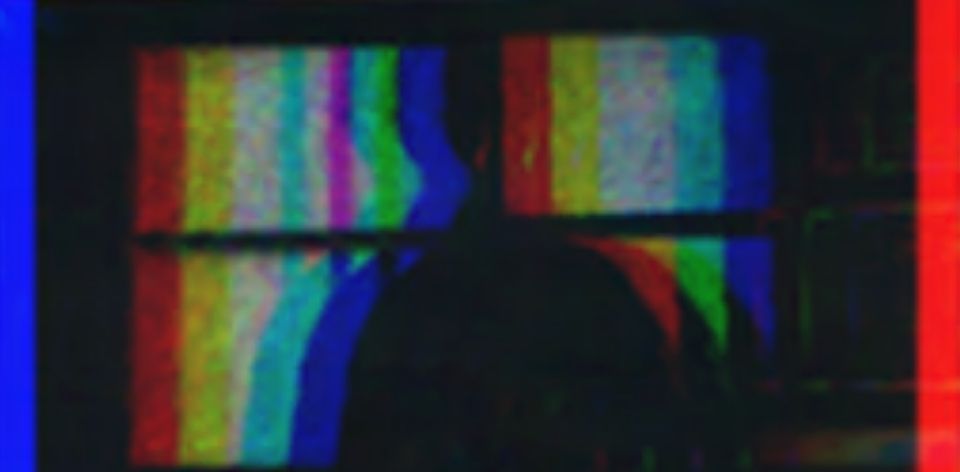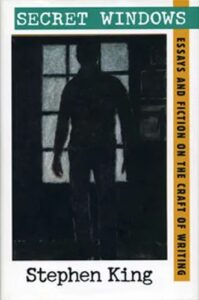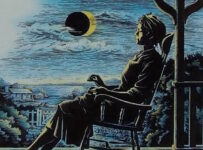Welcome back to Inconstant Reader, the feature column that explores Stephen King’s books in the order they were published — sort of! Here’s a glimpse into the evolving mind of a constant writer.
When Stephen King isn’t writing fiction, he’s writing about writing. At least that’s the impression that you’d get from SECRET WINDOWS: ESSAYS AND FICTION ON THE CRAFT OF WRITING, a collection of short stories, essays, speeches, and book excerpts he’s written over the years.
Originally published in October 2000 as a Book-of-the-Month Club offering, the now difficult to find volume is a kind of companion piece to On Writing released around the same time. It’s also the third reflection on the craft that King has published, following Danse Macabre (1981) – a chunk of which is replicated here. If you’re a process junkie like me, or even the regular kind of junkie, this book more than lives up to its title by offering a glimpse behind the hidden veil.
Unlike those previous non-fiction outings, SECRET WINDOWS consists almost entirely of existing material. Some of this is a veritable treasure chest for Constant Readers, including some of the earliest published work from the master. Dave’s Rag was a newspaper King printed with his brother when they were kids, and two excerpts from a 12-year-old Stephen Edwin King – Jumper (1959) and Rush Call (1960) – are replicated here. There’s even a facsimile of the paper’s cover. If only all our adolescent exploits would wind up in a limited edition hardcover.
Yet the majority of the pieces come from between 1973 and 1999. Or in context, just before Carrie through to The Girl Who Loved Tom Gordon. The earliest of these is The horror market writer and the ten bears: A true story, in which a writer on the cusp of success gives advice on how to submit stories to men’s magazines. Only a few short years later, there is a short piece King wrote for a 1980 edition Adelina magazine called On becoming a brand name, in which King reconciles his commercial work with being a working writer. In addition to a potted history of his early career, he gives us a through sense of how he works, concluding “the commercial writer who can tell the truth has achieved a great deal more than any ‘serious’ writer can hope for; he can tell the truth and still keep up with the mortgage payments.”
Which is why it’s also great to see the times when the Constant Writer becomes a Constant Reader. King is an unabashed fan of other writers, as the numerous pull-quotes and Tweets will attest. Here there’s introductions to new editions of John Fowles’s The Collector alongside a compelling argument Jack Ketchum’s The Girl Next Door is one of the greatest pieces of writing on the market. In the winkingly titled Great hookers I have known, King talks about those opening lines to novels that just hook you in. The most disarmingly insightful of these is his piece for Seventeen magazine, pinpointing those moments for young readers where you shift from a book you ‘must read’ for school to the ones you ‘want to read.’
There’s a den of rare gems and random insights too. I couldn’t believe that I didn’t know it was Warner Bros. who pushed for the title The Shining, which may explain part of his long held dislike of Stanley Kubrick’s film. We get a sense of where King thought he’d be in 20 years time, safe in the knowledge that he’s still writing novels almost twice that amount of time later. (For the record, he picked a pro bowler or Smokey Robinson). Yet even he may not have known how prophetic one passage would be. Originally written in 1983, see if it rings true in 2022:
I think a lot about our informational overload, And there’s also the fact that there are more of us now than ever before, and as a result a communicable disease can be passed very rapidly, from just the flu bugs, the regular flu bugs that go around. At the time of The Stand I was interested in the fact that the flu virus changes – that’s why you have to keep getting different flu boosters. It comes at you one way, and then it shifts its antigen and comes at you a different way, and your old flu shot doesn’t do any good because this is the new and improved flu.
Of course, Constant Readers may already be familiar with a bunch of the content. You’ll probably already know that the book’s title comes from the Secret Window, Secret Garden short story, and the piece included here (Two past midnight: A note on Secret Window, Secret Garden) is a preface to Four Past Midnight (1990), the collection that it comes from. The Ballad of the Flexible Bullet, one of the handful of fiction pieces included, had already been printed in King’s 1985 collection Skeleton Crew. Of course, the chunkiest part of the book is the Horror fiction section of Danse Macabre, itself a potted summary and reviews of King’s favourite stories of the previous few decades.
More than those previous collections, these works give us the greatest insight into how King’s style has developed over the years. Whether they are more formal pieces or casual interviews, it’s always evident that King has never stopped thinking about the craft. While it may not be as interesting to casual readers, this is clearly an essential read for devotees, especially those struggling to track down the individual pieces. Now, the only question that remains is whether a secret writing window lets in a draft.
Next time, this Inconstant Reader will skip right to present day Castle Rock and beyond with Gwendy’s Final Task, the third instalment of Stephen King and Richard Chizmar’s intriguing series. That tower on the cover sure looks dark, doesn’t it?





